Hey, everyone!
Today I’m sharing a method I like to use for what is perhaps my all-time favorite pasta dish— Pasta Bolognese.
One of the things I love about this dish is that it’s not super specific. I’ve made this probably close to 50 times over the last few years, and I tend to just work with what I have, occasionally omitting various elements or experimenting with new additions. It always turns out great.
This is not my recipe by any means. The blueprint I follow comes from Marcella Hazan in her excellent Essentials of Classic Italian Cooking cookbook, which has been my bible for exploring Italian cuisine. I also learned to make a version of this on my trip to Italy last year when my friend Danny and I trained with a Bolognese chef. He offered some additional points of view that led me to view this dish with a lot less rigidity.
There are a few elements here that are optional:
You can add milk to the dish, or you can omit it entirely. You can also use half-and-half or heavy cream instead. If I have any of these on hand I use them, but I just go without if not.
You can add wine to the sauce, but this isn’t necessary. Most of the time I don’t.
The classic version calls for crushed or strained tomatoes, but I also add in some tomato paste if I have it, which helps boost the concentrated tomato flavor. Again, this isn’t strictly necessary.
If I happen to have some Parmesan rinds laying around, I always throw those into the sauce as it simmers. It adds a bit more flavor and umami. Do it if you have them (and just remove them from the sauce before serving).
As the sauce cooks it tends to dry out a bit. You can add in a bit of beef broth to hydrate it, or just use water. Sometimes neither is necessary.
You can make this with beef, pork, veal, or even bison or venison. I’ve gotten the best results when I use a combinaton of leaner meat (beef, venison, bison) and something fattier like pork or veal. But the low-and-slow cooking process lends itself well to leaner cuts even if you just use those alone. I love making this with an “ancestral blend” that incorporates ground meat with heart and liver, since the heavy flavors of the tomato sauce tend to mask any minerality from the organs.
This dish is traditionally paired (and I’d argue best paired) with an egg pasta like parardelle. Made with fresh pasta, this dish is transcendent. But it also works great with any style of dried pasta.
Overall, this method is both customizable and forgiving, and what exactly you choose to do depends on your preferences, what you have available, and your own instincts throughout the cooking process. As it should be!
As always, feel free to shoot me a message if you have any questions!
Myles
Ingredients
1lb ground meat (I prefer a 50/50 combo of beef and pork usually)
2/3 cup yellow onion, diced small
2/3 cup carrot, diced small
1.5-2 cups crushed or strained tomatoes (I use Bionaturae)
2 tbsp tomato paste
1 cup whole milk
(optional) beef bone broth
(optional) ground nutmeg
black peppercorn
Parmesan and/or Pecorino romano
olive oil
butter
salt
dried or fresh pasta
Process
Heat a large pan or saucier over medium heat and add in a tbsp each of butter and olive oil. Once that melts, add in your onions and carrots.
Stir to combine, sauté for a few minutes, and then salt the vegetables.
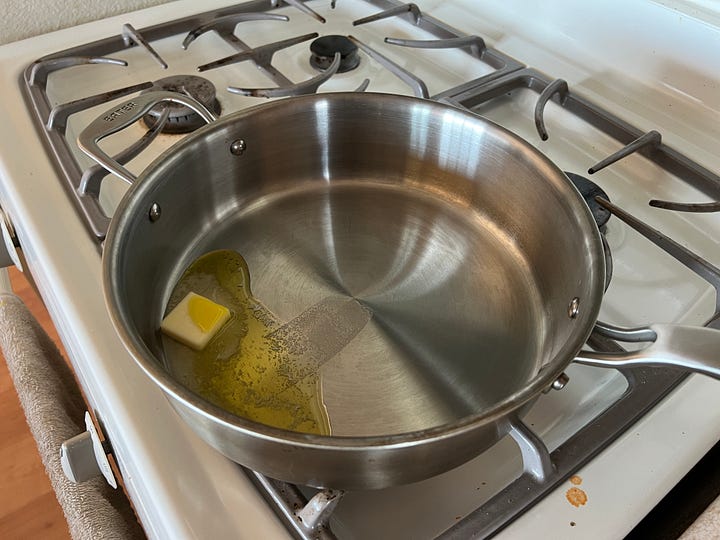
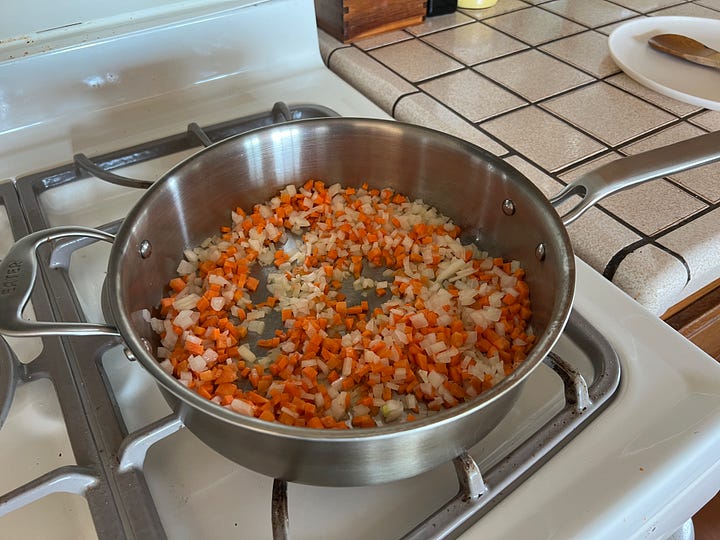
Using your hands, break your ground meat up into chunks and layer it throughout the pan.
Use a wooden spoon to really break up the meat. You want it to be in very small chunks in the final sauce. Salt the meat and add in a few cracks of fresh black pepper.
Cook the meat, continuing to break it up with a wooden spoon, for several minutes until it’s no longer a raw shade of red. Note that you don’t want to sear or brown the meat here— just cook it.
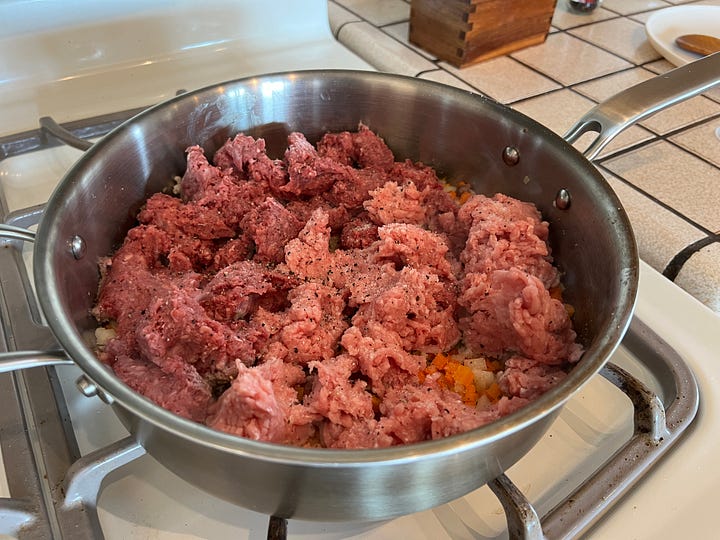

Add in a cup of whole milk (or 1/2 cup if using half-and-half or heavy cream). Give it a good stir, and allow the mixture to simmer gently for 5 minutes or so, stirring throughout.
As I mentioned before, the milk isn’t strictly necessary. But it does help to tenderize the meat and balance out some of the heavy acidity from the tomatoes. If you don’t have it, you can just move onto the next step.
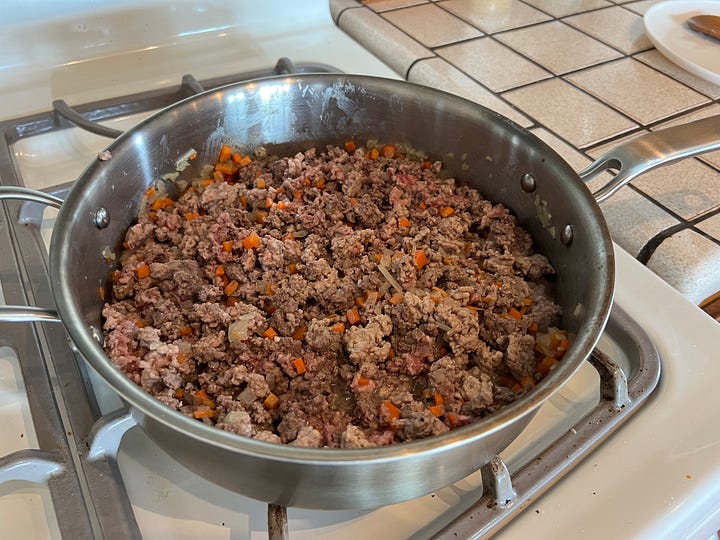
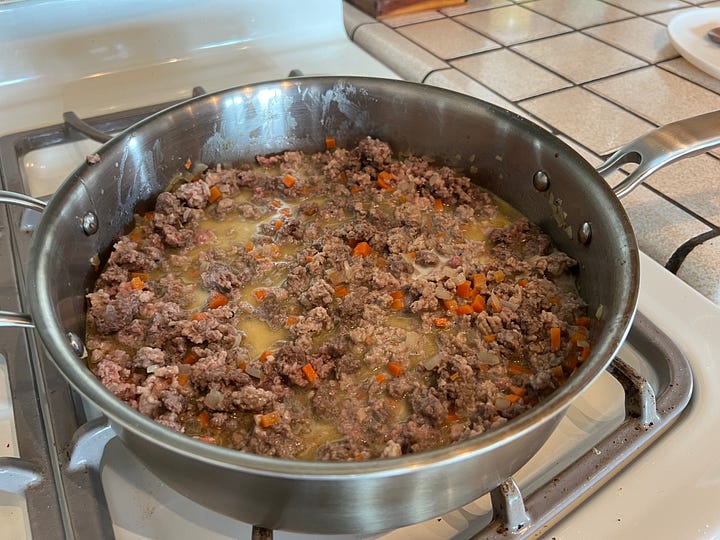
After 5-10 minutes, the milk should be somewhat evaporated. At this point, you can add in your tomato paste and strained tomatoes. Give everything a big stir, and salt it generously. Add in a small pinch of ground nutmeg and stir.
Toss in a Parmesan rind if you have one.

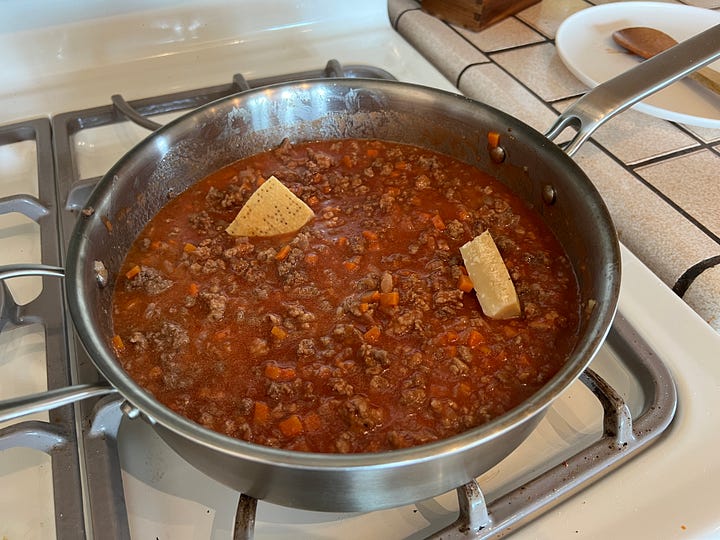
Turn the heat down to low or medium-low and allow it to simmer very gently for several hours. I usually let this cook (uncovered) for at least 3 hours, and sometimes up to 5.
While I prefer to make this sauce on the stovetop when I have the time to watch it, you can also cover it partially and put it in the oven at this point (usually around 275°F) for a few hours to cook.
If the sauce starts to dry out, you can either add in some water or some beef bone broth. Add in a bit at a time so as not to over-hydrate the sauce.
Make sure to occasionally stir the sauce throughout the cooking process, and also taste it and adjust as needed with more salt.


By the end, the sauce should be thick and not super liquidy (see the first picture below). If you added a Parmesan rind, remove that before serving.
When you’re ready to serve, cook your pasta and then toss it with the sauce to coat evenly.
Finish with a big grating of Parmesan and/or Pecorino romano cheese and some fresh-cracked black pepper. Enjoy!
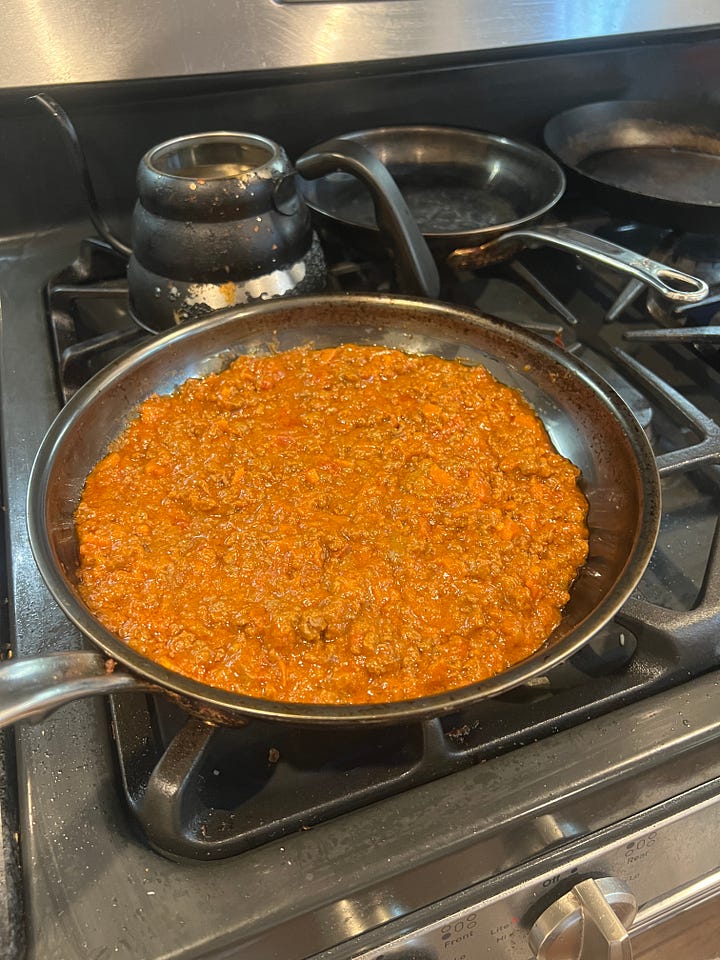
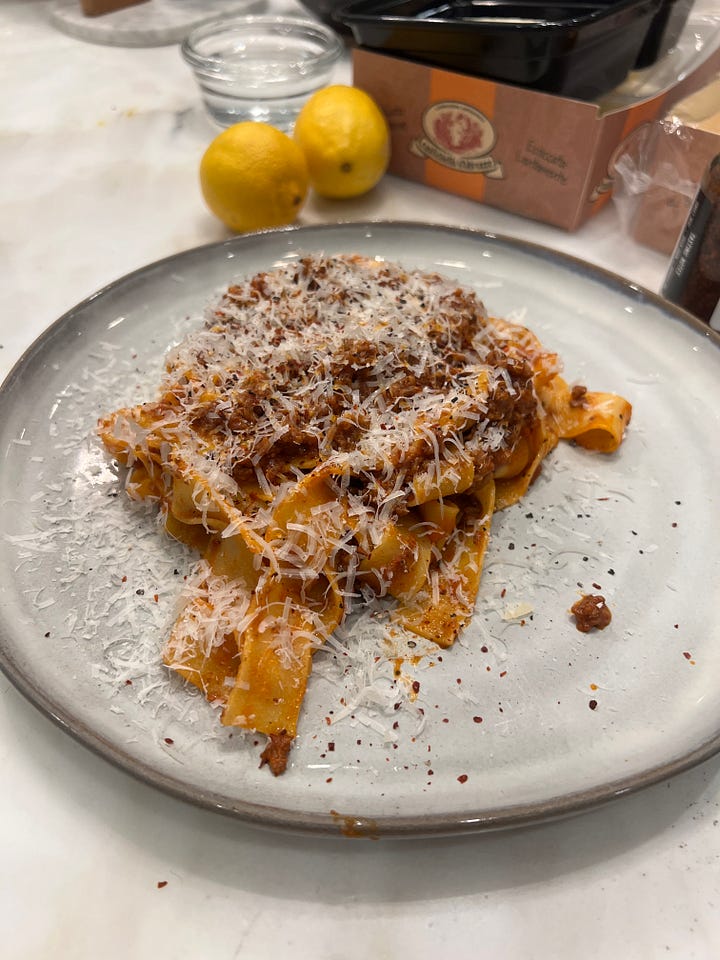


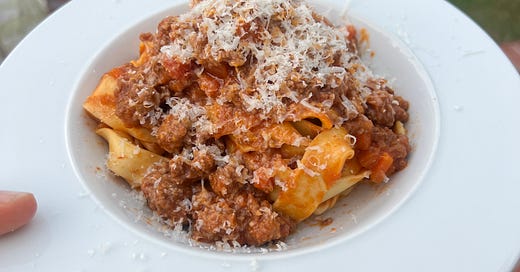



This looks perfectly done. Yum!
Myles - We made this dish last night, and it was amazing! Everyone loved it, including my daughter's friends (who ruined my hope of having midweek leftovers).
I added heavy cream while cooking the meat (beef & pork) and felt it improved the texture and flavor. The parmesan rinds (1" chunks) added a wonderful flavor to the sauce but they didn't fully melt after 2+ hours of cooking - is that normal or should I have chopped into smaller pieces?
I'm glad I took your advice and spent the extra $ on fresh pasta. Game changer!